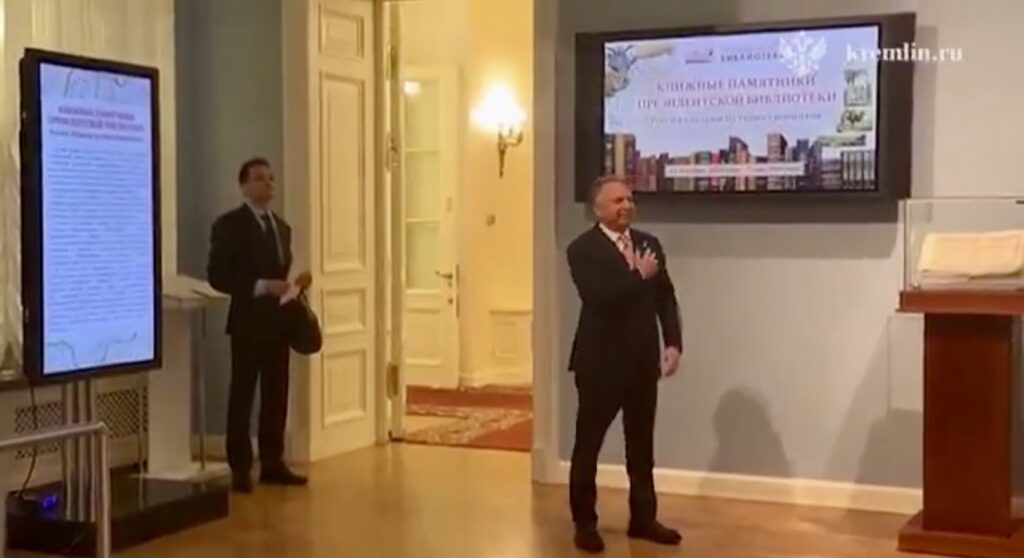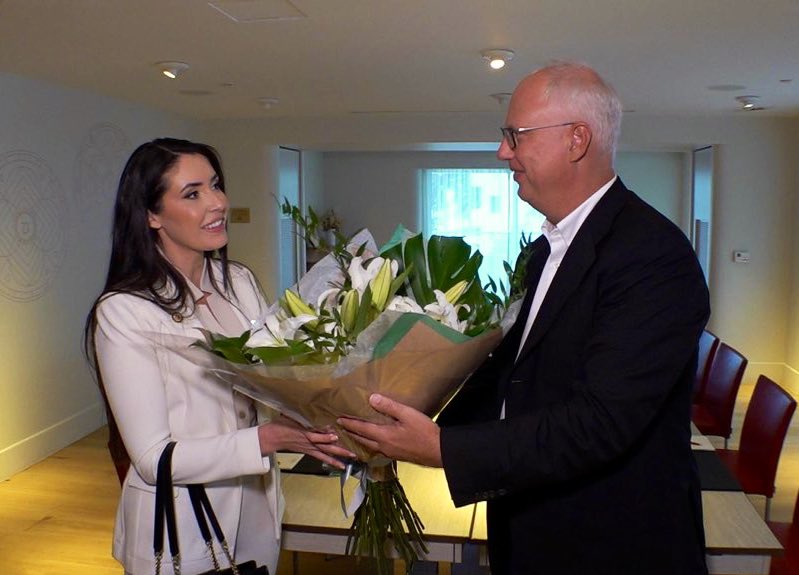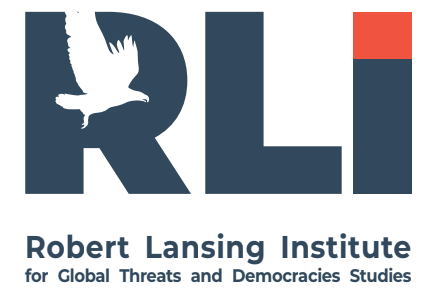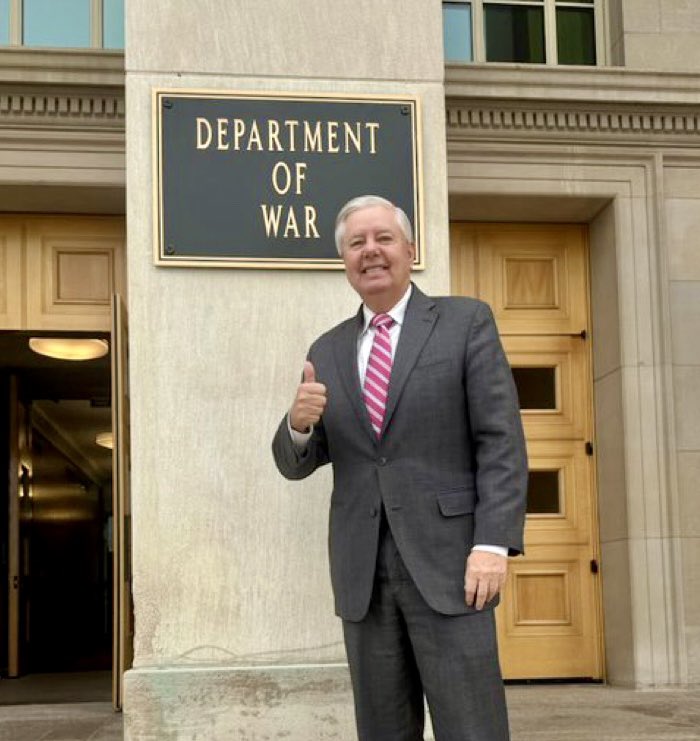The recently leaked 28-point plan to end the Russia–Ukraine war has already generated alarm among U.S. lawmakers — most prominently Senator Lindsey Graham, who has denounced the initiative as strategically incoherent, diplomatically illegitimate, and dangerously aligned with Russian interests.
- The plan is fundamentally pro-Russian, adopting Moscow’s framing of the war, security guarantees, territorial demands, and sanctions relief mechanisms.
- The proposal bypasses official U.S. foreign-policy institutions, sidelining the State Department, National Security Council, and intelligence community.
- Ukraine and European allies were entirely excluded, violating basic principles of alliance coordination and undermining the rules-based order.
- The plan mirrors previous Russian ultimatums, offering concessions that would reward aggression, weaken NATO, and set a precedent for future coercion.
- Its circulation threatens to fracture the Western coalition, which is precisely the outcome Moscow seeks.
Lindsey Graham’s Position: Unacceptable Concessions to an Aggressor
Senator Lindsey Graham has framed Russia’s war as a defining test of the 21st-century international order. Any framework that legitimizes territorial conquest or rewards Putin’s aggression, in Graham’s view, is “strategically catastrophic.”
From this perspective, Graham’s criticism focuses on three core weaknesses of the 28-point proposal:
The plan normalizes Russia’s occupation
It implicitly accepts Russia’s control over Ukrainian territory and conditions negotiations on Kyiv’s willingness to “freeze” the conflict without restoring sovereignty.
It demands Western concessions without reciprocal Russian actions
Sanctions relief, political recognition, and security guarantees for Russia appear early in the plan — while Russian withdrawal, accountability, and reparations are absent or vague.
It echoes the Kremlin’s narrative
The document repeatedly characterizes Ukraine as an obstacle to peace, while portraying Russia as a rational actor responding to “security concerns.”
Graham’s conclusion is straightforward:
any plan that reflects the Kremlin’s talking points is not a peace plan — it is an instrument of coercion.
A Pro-Russian Blueprint Disguised as Diplomacy
A “peace plan” that mirrors Putin’s demands
The 28-point document adopts the architecture of Russian proposals presented since early 2022:
- Recognition of Russian territorial gains
- Suspension or reversal of Western military aid to Ukraine
- Long-term sanctions relief
- Neutralization of Ukraine
- Restrictions on NATO presence in Eastern Europe
These points align not with Western security principles but with Russia’s longstanding revisionist agenda.
The plan punishes Ukraine while rewarding Russia
In several sections, Ukraine is required to make irreversible concessions — territorial, political, and military — in exchange for Russian promises, not actions.
The plan essentially asks Ukraine to capitulate in exchange for Moscow’s “good faith.”
History, to put it mildly, offers zero evidence that such promises are meaningful.
It removes accountability from the equation
Absent from the document:
- War-crimes prosecutions
- Reparations
- Russian liability for destruction
- Guarantees preventing renewed aggression
Its designers crafted a structure that secures Russia’s interests while placing all the risk on Ukraine and all the responsibility for compromise on the West.
The Plan Was Developed Outside Any U.S. Foreign-Policy Institution
This may be the most striking — and dangerous — aspect.
No State Department involvement
Neither the Secretary of State nor senior diplomats were consulted. This alone disqualifies the plan as a legitimate framework.
The National Security Council was bypassed
No interagency process took place, meaning:
- No intelligence evaluation
- No scenario planning
- No legal review
- No alliance coordination
A framework for European security was drafted behind the backs of the very institutions responsible for U.S. national security.
No congressional consultation
Congress — the branch constitutionally responsible for sanctions, funding, and oversight — was not briefed.
Outsider deals with a nuclear aggressor
The methodology resembles shadow diplomacy, not U.S. statecraft.
It opens the door for:
- unvetted channels,
- potential kompromat-driven influence,
- and disinformation pipelines from Moscow.
Graham’s frustration stems largely from this: nothing resembling U.S. policy procedure took place.
4. The Complete Exclusion of Ukraine and Europe
Not a single Ukrainian official was consulted
The plan dictates Ukraine’s future without Ukraine’s participation.
This violates every basic diplomatic principle, from the UN Charter to OSCE norms.
No European voice in a plan about European security
France, Germany, Poland, the Baltic states, the EU, and NATO were not included in its drafting.
Indeed, several points directly contradict:
- NATO’s strategic concept
- EU sanctions policy
- Polish and Baltic security requirements
- Ukraine’s constitution
The message is clear:
Europe was treated as a secondary player in its own security architecture.
The plan undermines allied unity
The absence of consultation creates precisely the fracture Moscow has sought since 2014:
- a divide between the U.S. and Europe,
- a divide between the U.S. and Ukraine,
- growing mistrust within NATO,
- and encouragement of Russian escalation.
The Kremlin’s core objective has always been to dismantle Western cohesion. This plan, intentionally or not, advances that goal.
Structural Defects and Geopolitical Consequences
A precedent for rewarding aggression
Accepting territorial seizure legitimizes conquest as a viable political tool.
A threat to Taiwan, the Baltics, Moldova, and the Balkans
Authoritarian actors will interpret Western concessions as an invitation.
Undermining U.S. credibility
If Washington endorses unilateral deals crafted outside official institutions, allies will question:
- American reliability
- The durability of mutual defense commitments
- The predictability of U.S. policy
Weakening of deterrence
The plan’s logic reduces costs for Russian aggression while increasing risks for NATO’s eastern flank.
The 28-point proposal is not a road map to peace. It is a political instrument that:
- Embraces Russian narratives
- Circumvents U.S. institutions
- Excludes Ukraine and Europe
- Legitimizes territorial conquest
- Undermines NATO unity
- Aligns with the Kremlin’s strategic objectives
Senator Lindsey Graham’s critique is therefore not simply partisan or rhetorical:
it is grounded in the fundamental principles of U.S. national security.
Any genuine peace plan must be based on:
- Ukrainian sovereignty
- European security interests
- Institutional U.S. foreign-policy processes
- Russia’s full withdrawal
- Reparations
- Accountability for war crimes
None of these appear in the 28-point document.
What the world needs is peace.
What Russia wants is capitulation.
And this plan is dangerously close to the latter.
Why the 28-Point “Peace Plan” Is So Poorly Prepared
The most striking feature of the 28-point plan is not simply its pro-Russian tilt — it is the amateurish, structurally incoherent, and diplomatically illiterate way it was assembled.
Its defects are systemic, not accidental.
Below are the seven core reasons why the plan is so poorly prepared.
1. It Was Drafted Outside Any Professional Diplomatic or National-Security Structure
No State Department review
No NSC involvement
No Pentagon or intelligence community assessment
No interagency process
In the U.S. system, nothing major in foreign policy is legitimate unless:
- multiple agencies review it,
- legal evaluations are conducted,
- intelligence inputs are integrated, and
- allies are consulted.
The 28-point plan bypassed every layer of this process.
As a result, it contains:
- factual inaccuracies,
- logically contradictory points,
- unenforceable recommendations,
- and politically impossible demands.
It looks like a document written in isolation, without access to classified information, regional expertise, or alliance obligations.
It Was Influenced by Individuals With No Mandate or Credentials
Everything indicates that the plan was produced by:
- informal advisors,
- politically motivated intermediaries,
- business lobbyists,
- and Kremlin-linked envoys like Kirill Dmitriev, who has no diplomatic training.
These actors:
- do not understand how NATO operates,
- do not understand European security architecture,
- do not understand Ukrainian domestic politics,
- and do not understand how sanctions regimes function.
This led to proposals that are technically unworkable and politically toxic.
It Recycles Old Russian Talking Points Without Adaptation
A serious negotiation document must:
- integrate multiple viewpoints
- propose mutually acceptable frameworks
- anticipate adversary responses
The 28-point plan does none of this.
Instead, it mechanically repeats:
- Russia’s demand for Ukraine’s neutrality
- Russia’s demand for territorial concessions
- Russia’s demand for sanctions relief
- Russia’s claim that “dialogue is blocked by Kyiv”
- Russia’s framing of NATO as the aggressor
It is essentially a cut-and-paste of previous Kremlin ultimatums from:
- Istanbul talks (2022)
- Minsk-2 logic (2015)
- Putin’s “buffer zone” speeches (2023–2025)
There is no innovation, no strategy, and no diplomatic craft.
It Is Built on Fantasies, Not Realistic Scenarios
The plan assumes:
- Ukraine will accept territorial amputations.
- Europe will accept sanctions relief for Russia.
- Russia will follow any commitments it signs.
- The U.S. can impose peace terms without Kyiv.
- NATO partners will quietly obey.
Each of these is strategically impossible.
A credible plan must be grounded in real political behavior.
Instead, the authors constructed a parallel universe favorable to Russia but disconnected from actual Western policy constraints.
5. It Ignores Ukraine’s Legal, Constitutional, and Political Reality
Under Ukrainian law, no president can cede territory.
Any “peace plan” that requires Kyiv to accept Russia’s gains is unconstitutional and would trigger:
- political collapse in Kyiv,
- mass protests,
- the fall of the government,
- and the end of U.S.–Ukrainian cooperation.
The authors either:
- did not know this, or
- did not care.
Both scenarios highlight amateurism.
6. It Excludes All Key Stakeholders — Ensuring Failure
Ukraine was not consulted
Europe was not consulted
NATO was not consulted
This is not merely a procedural flaw — it makes the plan dead on arrival.
The conflict is occurring:
- on Ukrainian soil,
- in Europe’s security space,
- within NATO’s strategic perimeter.
A plan that excludes all three is:
- illegitimate,
- unserious,
- and structurally destined to collapse.
Professionally drafted agreements (Dayton, Vienna, Oslo, etc.) always include all affected states.
This plan violates the first principle of diplomacy: nothing is decided about others without their participation.
It Serves Russia’s Interests Too Transparently
Even pro-Kremlin proposals normally mask their intentions to maintain some diplomatic credibility.
Not this one.
The document is so bluntly aligned with Moscow’s objectives that it reads like:
- a propaganda instrument,
- not a diplomatic framework.
This transparency of bias reveals the absence of any sophisticated drafting.
It reflects the mindset of individuals trying to please the Kremlin rather than construct a workable peace strategy.
Conclusion: A “Peace Plan” Written Like Political Advertising, Not Diplomacy
The 28-point plan is poorly prepared because:
- Professionals did not write it
- Institutions did not vet it
- Allies did not participate
- Ukraine was not consulted
- Russia’s talking points were copy-pasted
- The authors misunderstand modern diplomacy
- The plan is politically, legally, and strategically impossible
It looks less like a serious geopolitical document and more like a propaganda product designed to rehabilitate Kremlin intermediaries such as Kirill Dmitriev, who seek relevance by presenting themselves as “peacemakers.”
Comparison Between the 28-Point “Peace Plan” and Russian Ultimatums (2022–2025)
A Detailed Analytical Matrix
Territorial Concessions
28-Point Plan
- Implies Ukraine must “freeze” the conflict on current lines.
- Suggests “temporary arrangements” that de facto recognize Russian control of occupied territories.
- Frames territorial return as “future negotiations.”
Russian Ultimatums (2022–2025)
- February–March 2022 (Istanbul talks):
Russia demanded Ukrainian recognition of Crimea, LNR/DNR, and occupation lines. - 2022–2023 Kremlin statements:
Putin repeatedly insisted on “irreversible territorial changes.” - 2024–2025 rhetoric:
“New realities” must be acknowledged; borders are “non-negotiable.”
Conclusion
The 28-point plan directly duplicates Russia’s territorial demands, offering Moscow what it has been unable to secure militarily.
Ukraine’s Neutrality and De-militarization
28-Point Plan
- Discusses “security guarantees” that would limit Ukraine’s defense posture.
- Proposes “long-term neutrality” or “strategic restraint.”
- Suggests ceilings on Western weapons systems delivered to Ukraine.
Russian Ultimatums
- Dec. 2021 Russian draft treaties:
– Ukraine must never join NATO
– No foreign troops or weapons in Ukraine - 2022–2025:
Russia regularly demands Western demilitarization of Ukraine.
Conclusion
The plan reproduces Russia’s neutralization blueprint almost word for word.
Restrictions on NATO
28-Point Plan
- Calls for “confidence measures” limiting NATO activities near Russia.
- Mentions moratoria or geographic restrictions on missile deployment.
- Implies a rollback of NATO presence in Eastern Europe.
Russian Ultimatums
- 2021–2022:
Russia demanded NATO withdraw to 1997 lines. - 2023–2025:
Russian MFA repeatedly calls for “demilitarizing Eastern Europe.”
Conclusion
The plan aligns with Russia’s long-standing objective to weaken NATO’s eastern flank and create a buffer zone.
Sanctions Relief
28-Point Plan
- Introduces staged sanctions relief tied to “dialogue” rather than Russian withdrawal.
- Appears to front-load economic concessions while postponing verification.
Russian Ultimatums
- Since 2014, Russia has demanded sanctions be lifted as a precondition for “dialogue.”
- 2022–2025:
Russia links any ceasefire proposal to immediate sanctions relief.
Conclusion
The plan delivers Russia’s economic priorities first, without requiring genuine compliance.
Blaming Ukraine for Diplomatic Failure
28-Point Plan
- Suggests Ukraine “missed opportunities” for peace.
- Implies Kyiv obstructed negotiations.
- Uses language such as “lack of flexibility on the Ukrainian side.”
Russian Ultimatums
- 2022–2025 Kremlin narrative:
“Ukraine sabotages peace,” “Kyiv follows Western orders,” “Kyiv refuses dialogue.”
Conclusion
The plan’s narrative is indistinguishable from Kremlin propaganda lines.
Absence of Accountability & Justice
28-Point Plan
- No mention of:
– War crimes
– Deportations
– Ecocide (Kakhovka)
– Nuclear coercion
– Reparations
– Responsibility for genocide/terror
Russian Ultimatums
- Russia insists all “politicized accusations” be dropped.
- Rejects ICC jurisdiction.
- Demands unconditional amnesty for Russian officials.
Conclusion
The plan mirrors Russia’s attempts to escape legal liability.
Frozen Conflict as a Strategy
28-Point Plan
- Proposes ceasefire with no withdrawal.
- Institutionalizes a frozen conflict.
- Creates space for future Russian rearmament.
Russian Ultimatums
- Russia explicitly prefers:
“A long pause for regrouping.”
“A Korean scenario.”
“A ceasefire without surrendering gains.”
Conclusion
The plan supports Russia’s strategic need for time.
Western Aid Restrictions
28-Point Plan
- Recommends limits on weapons to Ukraine.
- Discusses potential moratoria on offensive systems.
- Calls for “de-escalation” by the West.
Russian Ultimatums
- From 2022 to 2025, Russia has demanded:
– No long-range missiles for Ukraine
– Limits on NATO training
– Bans on F-16s, ATACMS, and Patriot systems
Conclusion
The plan advances Russia’s push to disarm Ukraine through Western restraint.
Russia’s Security Above Ukraine’s Survival
28-Point Plan
- Emphasizes Russia’s “security concerns.”
- Positions Russia as a stakeholder with legitimate grievances.
- Downplays Ukraine’s right to resist occupation.
Russian Ultimatums
- Core principle of all Russian demands:
Russia must receive guarantees; Ukraine must receive constraints.
Conclusion
The plan reproduces Russia’s framing of itself as a victim, not the aggressor.
Exclusion of Allies and Bypass of Institutions
28-Point Plan
- Drafted without participation of:
– Ukraine
– European Union
– NATO
– U.S. State Department
– U.S. intelligence community
Russian Ultimatums
- Russia consistently attempts to force bilateral U.S.–Russia agreements that exclude Europe and Ukraine.
Conclusion
The plan serves Russia’s diplomatic goal:
divide the West and isolate Ukraine.
The 28-point plan is not an original diplomatic proposal — it is a rebranded, Westernized version of Russian ultimatums issued between 2022 and 2025.
It aligns with Moscow’s strategic priorities:
- Territorial seizure affirmed
- Ukraine neutralized
- NATO constrained
- Sanctions lifted
- Russia’s war crimes ignored
- Alliance unity broken
This is why Lindsey Graham — and any serious U.S. policymaker — immediately saw through the document.

More on this story: Delegitimising Dmitriev: From Surrogate Diplomat to Defiant Propagandist

More on this story: Special Envoy Steve Witkoff: Peacebroker or Pawn of Russian Interests?

More on this story: Analysis: Outcomes of the Witkoff Visit to Moscow

I🔹




